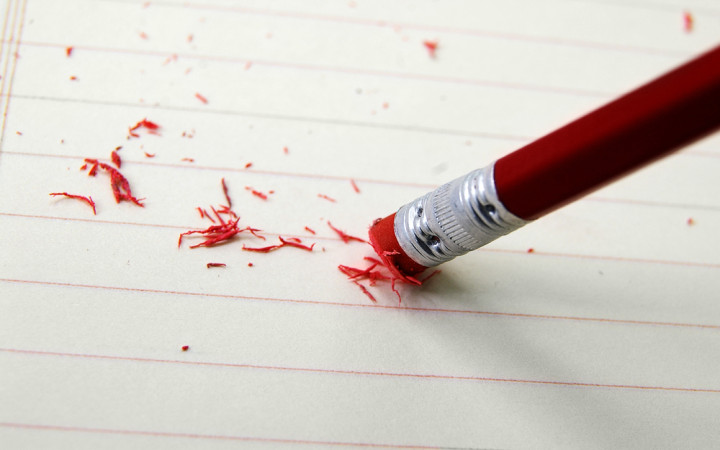Today’s Wonder of the Day was inspired by Hally from Eagle Mountain, UT. Hally Wonders, “How do erasers work?” Thanks for WONDERing with us, Hally!
2 + 2 = 5. Oops! Not quite… now where did I put that eraser?
Mistakes happen all the time. And that's OK. Everyone makes mistakes. The important thing is to learn from them… and erase them as soon as possible once you spot them!
Have you ever stopped to think about exactly how that little pink piece of rubber at the end of your pencil is able to erase what you've written? Is it magic? Nope! There's a perfectly logical, scientific answer.
Before we get to how erasers work, though, let's learn a bit about what exactly is on the paper that you're erasing. Although we call the black stuff in pencils “lead," it's not the real metal known as lead.
It's actually a mineral called "graphite," which is made up of carbon. When you write with a pencil, graphite particles from the pencil rub off and stick to the fibers of the paper you're writing on.
While pencils are filled with graphite, erasers are made mostly of rubber, although plastic and vinyl are sometimes used. The rubber is usually combined with sulfur to make it last longer.
A softener, such as vegetable oil, is also usually added to make the eraser more flexible. Finally, abrasives, like pumice or quartzite, are added, along with dye to give the eraser a particular color.
When you rub an eraser across a pencil mark, the abrasives in the eraser gently scratch the surface fibers of the paper to loosen the graphite particles. The softeners in the eraser help to prevent the paper from tearing. The sticky rubber in the eraser grabs and holds on to the graphite particles.
Erasers work because of friction. Try rubbing your hands together right now. Do you feel them getting warmer the longer you rub? The warmth you feel is the heat generated by the force of friction created by the rough surfaces of your hands rubbing together.
As the abrasives in your eraser are rubbed against paper, friction produces heat, which helps the rubber become sticky enough to hold onto the graphite particles. As the rubber grabs the graphite particles, small pieces of combined rubber and graphite get left behind. That's the “stuff" you brush off of your paper when you're finished erasing.
An English engineer named Edward Naime invented the eraser in 1770. Up until that time, people usually used rolled-up pieces of white bread to erase pencil marks.
Legend has it that Naime accidentally picked up a piece of rubber instead of bread and discovered that it would “rub" out pencil marks. That's where the name “rubber" comes from.




